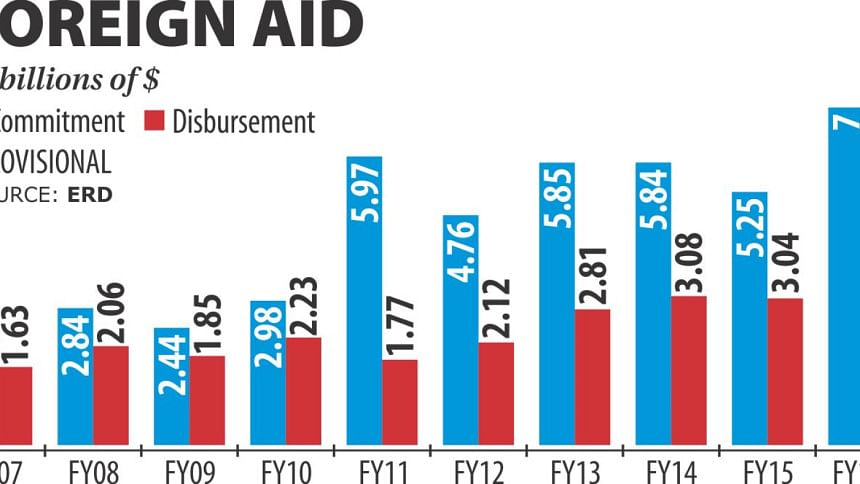Aid disbursement reaches new high

Foreign aid disbursement increased 13.34 percent year-on-year to $3.5 billion in fiscal 2015-16, setting a new record.
This is the third year in a row that foreign aid upwards of $3 billion was disbursed, according to statistics from the Economic Relations Division.
However, actual disbursement fell short of the target for the fiscal year, which was more than $4 billion.
“A few years back, Bangladesh could disburse up to $2 billion. Now, with the increase in commitment, disbursement is also increasing,” said an ERD official.
In fiscal 2015-16, foreign aid commitment touched the $7 billion mark, which is highest in the history of Bangladesh.
In the last five years, Bangladesh got commitment in the region of $5 billion to $6 billion, and before that it was below $2 billion.
India pledged $2 billion last fiscal year, which is the highest, followed by the World Bank at $1.5 billion. The disbursement was the highest from the WB's assistance, of $1 billion.
In recent years, the government and the development partners have found a way to boost fund disbursement in order to take the benefits of development efforts to the people, the ERD official said.
Nowadays, the ERD, development partners and ministries sit in a tripartite meeting regularly and discuss the barriers case by case to find out their remedies and expedite the implementation of projects.
Besides, Bangladesh has become one of the few countries in the world to set up a locally developed online aid information platform called Bangladesh Aid Information Management System or AIMS.
Launched in October 2014, the web-based software application will help the country track and manage its aid flows.
“AIMS is expected to play a key role in promoting effective development partnership,” said the ERD official.
The prime minister also directed the ministries and divisions on several occasions to expedite the use of foreign aid. It was also discussed in the cabinet meeting, he said.
However, a handsome amount of foreign aid is still lying in the pipeline, which crossed the $23 billion-mark in the beginning of the current fiscal year.
Normally, it is assumed that if 20 percent of the unused foreign aid in the pipeline can be used in a particular year, it is considered to be a better performance.
To achieve that, Bangladesh will have to spend $4 billion each year, which has not been possible yet.

 For all latest news, follow The Daily Star's Google News channel.
For all latest news, follow The Daily Star's Google News channel. 



Comments